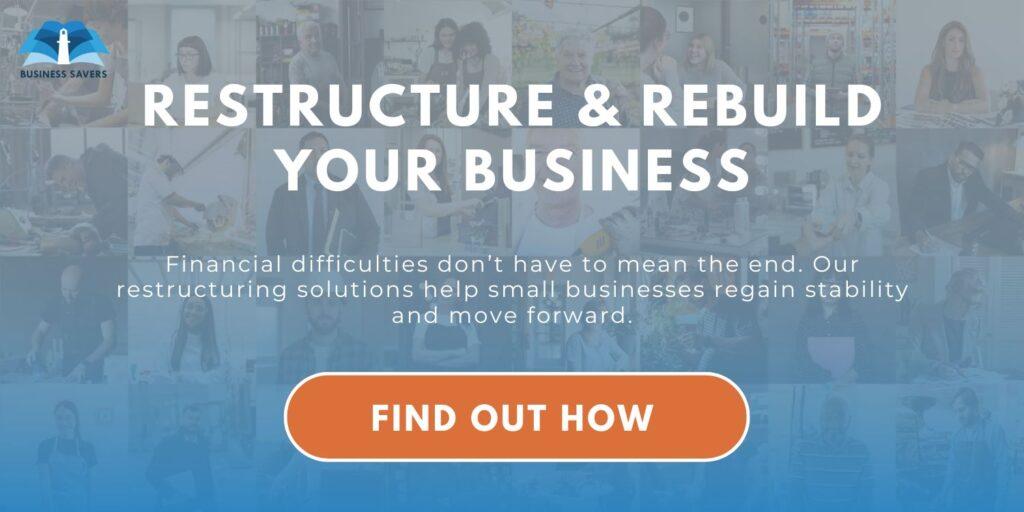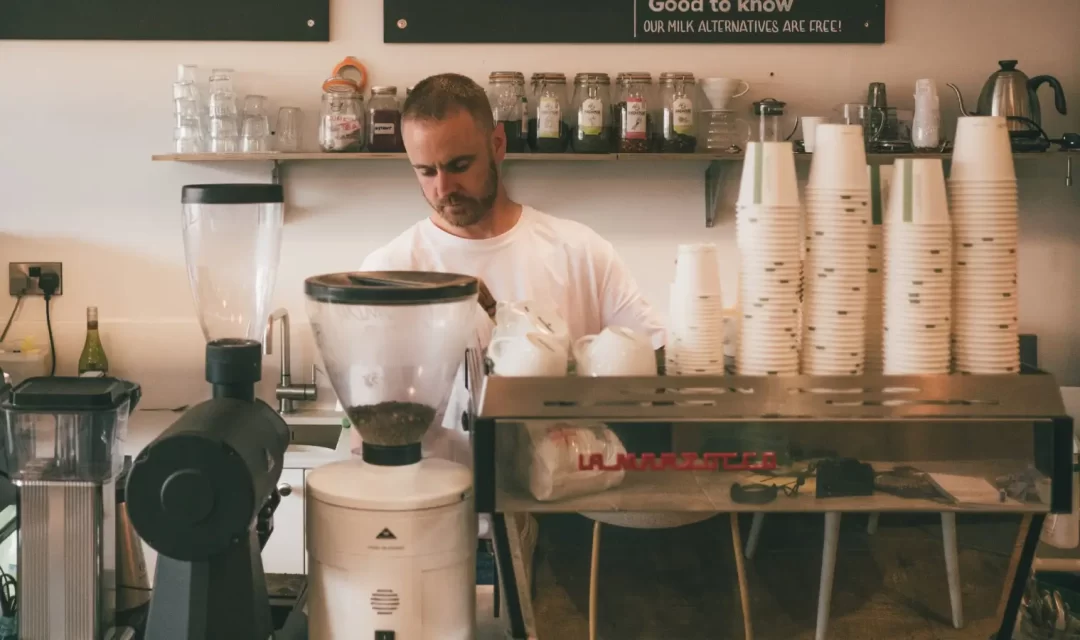Restructuring is one of the options available to companies that are experiencing financial distress.
During the restructuring process, the company reduces waste and sells assets to pay off as much of its debt as possible. This can save the company from liquidation and allow it to continue trading as normal.
Large-scale restructuring can be a complicated and expensive process. Luckily for small businesses in Australia, Small Business Restructuring (SBR) is a simplified process that carries relatively low costs.
In this article, we’ll explore Small Business Restructuring and provide examples of how the legislation would apply to small businesses.
What Does Small Business Restructuring (SBR) Involve?
Small Business Restructuring (SBR) is a simplified process that allows eligible companies to negotiate with creditors and restructure their debts. It costs substantially less than traditional restructuring, and it allows directors to remain in control of their company.
The SBR process involves assessing the company’s financial situation, negotiating with creditors, and developing a Restructuring Plan. The Restructuring Plan details how the company will repay its debts. This may involve:
- Reducing the total amount of debt (with the remainder being forgiven)
- Offering a proposal to pay down debt in instalments
- Selling assets
- Streamlining operations
- Identifying and reducing waste
- Taking advantage of emerging opportunities
Each Restructuring Plan is unique. There is no set format or time limit. The only requirement is that the Plan provides a solution for repaying company debt in a reasonable timeframe.
This Plan is put to the creditors who can vote to approve or reject the proposal. If approved, the company is bound to fulfil its obligations within the specified time.
Who Can Access Small Business Restructuring?
Small Business Restructuring is only available to eligible companies. The company must:
- Be insolvent (or likely to become insolvent)
- Have debts of less than $1 million (excluding secured debt)
- Have paid all employee entitlements
- Be up to date on all tax lodgements
- The company and/or its directors cannot have used SBR or Simple Liquidation within the previous 7 years
Eligibility is strictly administered. Consult a Restructuring Practitioner before applying for SBR to determine whether it’s the right option for your company.

Examples of Small Business Restructuring
Example A – Successful Restructuring
Smith Plumbing is left with outstanding debts when the builder they are working for goes out of business.
Smith Plumbing is eligible for Small Business Restructuring – all employee entitlements are paid, tax lodgements are up to date and its debts are less than $1 million. In total, Smith Plumbing owes $90,000 to the ATO and $30,000 to materials suppliers.
In this case, Smith Plumbing is made aware that the builder has entered liquidation. The builder owes Smith Plumbing a substantial amount of money, and the plumber knows they are unlikely to see a return from the liquidation process.
Smith Plumbing forecasts that it won’t be able to repay all its debts on time as a result.
The director of Smith Plumbing appoints a Restructructuring Practitioner and makes a proposal to the creditors. Under the proposal, the director will personally contribute $20,000 to repaying debts.
This provides a return of 16 cents on the dollar (taking into account normal costs of the Restructuring Practitioner).
Creditors accept the proposal because it provides better returns than liquidating Smith Plumbing.
The director contributes a lump sum into a fund that is used to pay creditors and the costs of the Restructuring Practitioner. Dividends are distributed according to the Restructuring Plan, and all the conditions of the Plan are met.
The remaining $100,000 of debt is extinguished and Smith Plumbing continues to trade under the control of its director.
Example B – Successful Restructuring
Fitness Inc is an ecommerce company that specialises in gym equipment. The company has been operating for 12 months, and its sales are substantially less than expected.
Fitness Inc is eligible for Small Business Restructuring. Employee entitlements are paid and its tax lodgements are up to date. The company owes a total of $60,000 to equipment and warehousing suppliers.
After missing multiple debt payments, the company director appoints a Restructuring Practitioner.
The director works with the Restructuring Practitioner to propose a solution to creditors. Under the Restructuring Plan, the director will reduce their annual salary by $20,000. Fitness Inc will also invest $4,000 per month in a marketing campaign that’s projected to increase sales by $100,000 per year.
With the reduction in salary and increased revenue from its marketing activities, Fitness Inc projects that it can pay 12 monthly instalments of $2,000 towards its debts.
This is a return of 40 cents on the dollar (accounting for normal restructuring costs). The creditors accept the proposal.
Over the next year, the director of Fitness Inc accepts a salary reduction and runs a successful marketing campaign. The company is able to pay $2,000 every month towards its debts.
At the end of the 12 month period, Fitness Inc has successfully met the conditions of its Restructuring Plan. The remaining debts are extinguished and the company continues to trade as normal.
Example C – Unsuccessful Restructuring
Coffee Co operates a small chain of boutique cafes. Increased competition from a large brand is putting pressure on Coffee Co and causing a decrease in sales.
Coffee Co is eligible for Small Business Restructuring. Employee entitlements are paid and tax lodgements are up to date. The company owes a total of $220,000 to the ATO and $180,000 to suppliers.
Based on historical data, Coffee Co estimates that the extra competition will decrease earnings by 40%, and they will be unable to pay their debts on time.
The directors appoint a Restructuring Practitioner to streamline the business and negotiate with creditors. They propose selling the company-owned coffee roasting facility and sourcing their coffee beans from a cheaper supplier.
This will allow them to lower the cost of their products and remain competitive in the local market.
It’s estimated that selling the coffee roasting facility will generate $60,000 that will go into a fund for the creditors. In addition, Coffee Co forecasts that it will be able to pay two instalments of $15,000 from future earnings.
This is a return of approximately 22 cents on the dollar (accounting for normal restructuring costs).
The creditors accept this proposal as it provides better returns than placing Coffee Co in liquidation.
Coffee Co works with their Restructuring Practitioner to find a buyer for the roasting facility, selling it for $60,000.
Unfortunately, Coffee Co is unable to hit its revenue goals following the sale of the roasting facility, and it can’t afford to pay the first $15,000 instalment.
The directors can’t source this money within 10 business days of the payment due date, and the Restructuring Plan is terminated early.
Following this, the directors resolve that Coffee Co is unable to satisfy its debts and they appoint a Liquidator to wind up the company.
Talk to Business Savers to See if Small Business Restructuring is Right for You
Australia’s Small Business Restructuring legislation is an excellent tool for struggling companies. It provides a relatively quick and low-cost alternative to other insolvency frameworks, and it allows the directors to retain control of the company.
SBR is only available to eligible companies. The eligibility criteria are strictly applied, so it’s important to work with a registered Restructuring Practitioner from Business Savers.
Business Savers are experts in insolvency, restructuring and liquidation. We’ve helped hundreds of businesses to assess their options and work towards better outcomes.
If you are concerned about your company’s financial situation, contact us for a confidential consultation.


Recent Comments